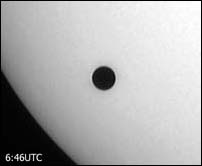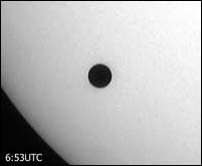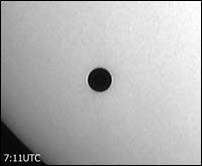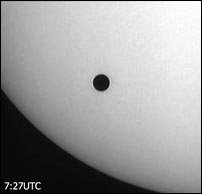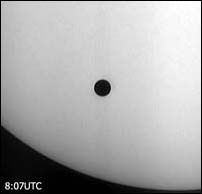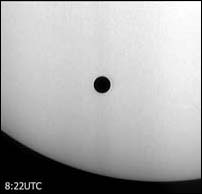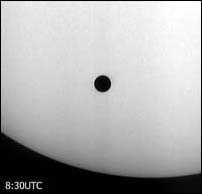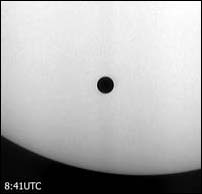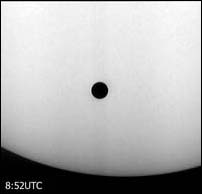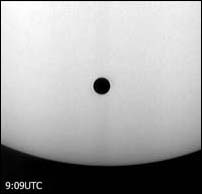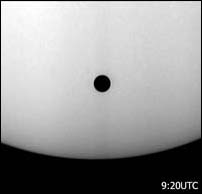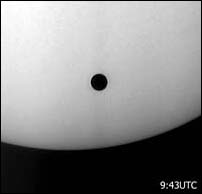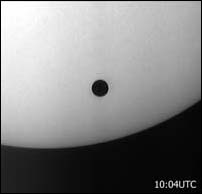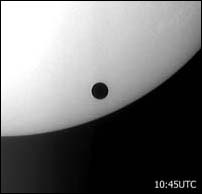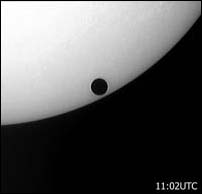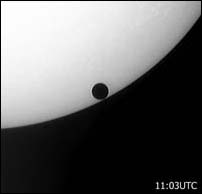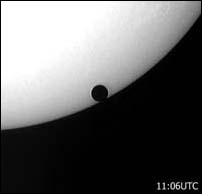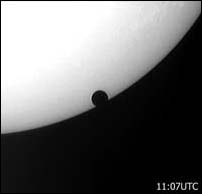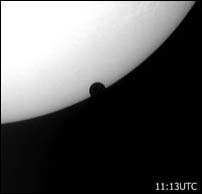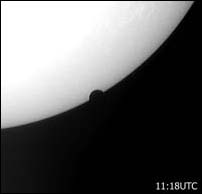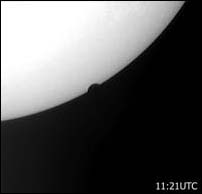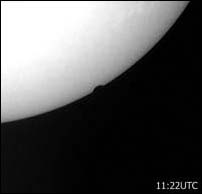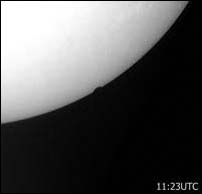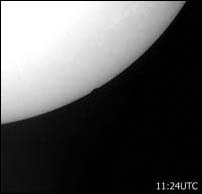





















Transits of Venus: 1601-2200
Date Universal Separation
Time
1631 Dec 07 05:19 939 "
1639 Dec 04 18:26 524 "
1761 Jun 06 05:19 570 "
1769 Jun 03 22:25 609 "
1874 Dec 09 04:07 830 "
1882 Dec 06 17:06 637 "
2004 Jun 08 08:20 627 "
2012 Jun 06 01:28 553 "
2117 Dec 11 02:48 724 "
2125 Dec 08 16:01 733 "
When Johannes Kepler published the Rudolphine Tables of planetary motion in 1627, they permitted him to make detailed and fairly accurate predictions of the future positions and interesting alignments of the planets. Much to his surprise, he discovered that both Mercury and Venus would transit the Sun's disk in late 1631. Kepler died before the transits, but French astronomer Pierre Gassendi succeeded in becoming the first to witness a transit of Mercury. The following month, he tried to observe the transit of Venus, but modern calculations show that it was not visible from Europe. Although Kepler's predictions suggested that the next Venus transit would not occur until the following century, a promising, young British amateur astronomer named Jeremiah Horrocks believed that another transit would occur in 1639. His calculations were completed just a month before the event so there was little time to spread the word. Horrocks and his good friend William Crabtree were apparently the only ones to witness the transit of Venus on 1639 Dec 04 which allowed them to accurately measure the apparent diameter of the planet. Unfortunately, both Horrocks and Crabtree died young before either of them reached their full potential.
Nearly forty years later a young Edmond Halley observed the 1677 transit of Mercury while completing a southern hemisphere star catalog from Saint Helena's Island. Halley realized that the careful timing of transits could be used to determine the distance of Earth from the Sun. The technique relied on observations made from the far corners of the globe. The effect of parallax on the remote observers would allow them to derive the absolute distance scale of the entire solar system. Venus transits were better suited to this goal than were Mercury transits because Venus is closer to Earth and consequently exhibits a larger parallax. Halley challenged future generations to organize major expeditions to the ends of Earth in order to observe the transits of 1761 and 1769.
Many scientific expeditions were mounted but the results were disappointing. The accurate timings needed were not possible due to a mysterious "black drop" effect in which the edge of Venus's disk appeared to deform and cling to the limb of the Sun. Undeterred by the results, another major observing campaign was mounted by many nations for the Venus transits of 1874 and 1882. Again, the "black drop" limited the precision of the observations and the determination of the Sun's distance. Modern analyses show that the "black drop" is the result of seeing effects due to Earth's turbulent atmosphere.
The distance to the Sun and planets can now be measured extremely accurately using radar. Still, it is a remarkably rare event which was of great value during the early the history of modern astronomy.
source: http://sunearth.gsfc.nasa.gov/eclipse/OH/transit04.html
The Transit of Venus was well observed from Portugal by Pedro Ré and António Peres Gomes (aproximate coordinates 37º 07' Lat N 008º 26' Long W). Two apochromatic telescopes (Takahashi FS102 F/8) were used.
A DSLR (FujiFilm S1 Pro) and a ToucamPro were used to cover the event (see below). A total of 29 Photos (10 min intervals) and 39 videos were made.
PDF File TRANSIT OF VENUS (30kB)  Transit of Venus (contacts III and IV). Average error (0.012%)
Animated GIF (Venus Transit 20040608).
Transit of Venus (contacts III and IV). Average error (0.012%)
Animated GIF (Venus Transit 20040608).Takahashi FS102 F/8 FujiFilm S1 Pro (10min intervals) (2Mb)

Observatory (Takahashi FS102 F/8 Mountain Instruments MI-250 GoTo Equatorial Mount Philips)
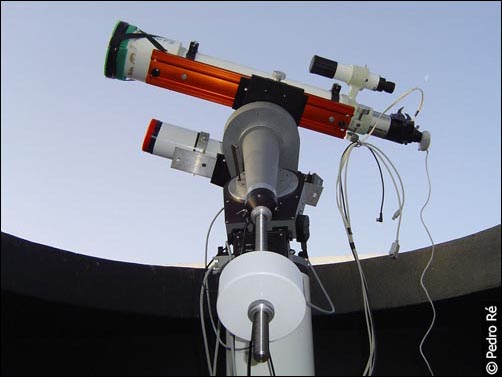
Takahashi FS102 F/8 Mountain Instruments MI-250 GoTo Equatorial Mount Philips ToucamPro
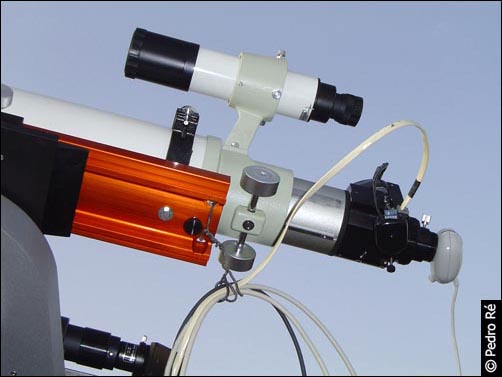
Takahashi FS102 F/8 Philips ToucamPro

Takahashi FS102 EM-2 Equatorial Mount
Observing setup Click on images for full-sized view. Animated GIF (VT2004 Pedro Ré & Antório Peres Gomes)
Animated GIF (Contact III and IV)


